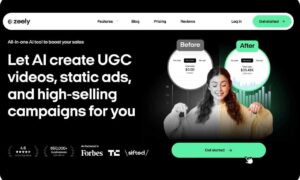In the fast-moving world of digital marketing, understanding how real people interact with your campaigns, website, or product is everything. That’s where user testing comes in , it’s like getting a direct line into your audience’s thoughts, frustrations, and preferences. Instead of guessing what works, user testing gives you real feedback that can help shape better marketing strategies, boost conversions, and ultimately grow your business.
Let’s explore why user testing is a must in growth marketing, the different types you can use, how to build an effective testing strategy, and how feedback can fine-tune your customer experience.
Why User Testing Matters in Growth Marketing
User testing isn’t just a bonus; it’s essential. It gives marketers a window into how people actually experience a brand , not just how we think they do. This helps uncover pain points, usability issues, and gaps in the user journey that may be hurting your growth.
Beyond fixing problems, user testing reveals what your audience likes, expects, and responds to. These insights are gold when creating content, crafting messaging, and targeting the right audience. When done right, user testing can help you reach new market segments and scale your efforts more efficiently.
Types of User Testing and When to Use Them
There isn’t a one-size-fits-all approach to user testing. Depending on your goals, here are some popular methods you can use:
Usability Testing
This is all about figuring out how easy it is for people to use your product or website. Are they getting stuck somewhere? Is something confusing or taking too long? You can conduct usability tests in-person, remotely, or even through A/B testing. It’s ideal when you’re launching a new website, product, or feature and want to make sure everything is running smoothly.
Surveys
Surveys let you gather quick, data-driven insights from a large audience. You can ask about satisfaction, preferences, expectations, and behaviors. They’re a great way to validate assumptions or gather feedback before a big campaign launch.
Focus Groups
Focus groups are more intimate , typically small sessions where users discuss their experiences or opinions in depth. They’re perfect when you want to dig into the why behind user behavior. These can be conducted in person or virtually and often lead to deeper, more emotional insights than surveys alone.
Developing User Testing Strategies for Growth Marketing Campaigns
To run successful user testing, start by clearly defining what you want to achieve. Are you aiming to increase sign-ups? Reduce bounce rate? Improve content clarity? Once your objective is clear, choose the testing method that best supports that goal.
Next, design a testing plan:
- Decide how you’ll collect the data (e.g., via tools, interviews, surveys)
- Set a reasonable sample size
- Outline what success looks like
- Set deadlines for running the tests and reviewing the results
Having a structured approach ensures your testing yields actionable results, rather than just opinions.
Using Feedback to Improve the User Experience
One of the biggest advantages of user testing is the actionable feedback you get. Whether it’s a confusing sign-up form or unclear product messaging, feedback helps pinpoint exactly what’s not working. Once identified, your team can make data-backed improvements that genuinely enhance the user experience.
When users feel understood and supported, they’re more likely to stay, convert, and recommend your brand.
Leveraging User Testing to Enhance Conversion Rates and Drive Growth
User testing can directly impact your bottom line in a few key ways:
- Fixing friction points: By smoothing out clunky experiences or misunderstood messaging, you reduce drop-offs and increase conversions.
- Personalized marketing: With a better grasp of what your audience values, you can tailor your messaging and content, which makes your marketing more effective.
- Uncovering new opportunities: Sometimes user feedback reveals demand for features or services you haven’t considered yet. This can guide product development and open new revenue streams.
Measuring What Matters: Evaluating User Testing Results
Collecting user feedback is great, but knowing what to do with it is even better. Start by choosing the right key performance indicators (KPIs) based on your campaign goals. If you’re focused on conversions, track metrics like form submissions, purchases, or time spent on a page.
You can also use data visualization tools like heatmaps, click maps, or funnel analysis to spot patterns. This makes it easier to identify where users get confused or drop off and where you’re doing something right.
Integrating User Testing into a Comprehensive Growth Marketing Plan
User testing shouldn’t be a one-off task. It needs to be baked into your entire marketing process , from initial concept to campaign launch and beyond.
Here are two practical ways to do that:
- Test at every stage of the funnel:
Start with your landing pages, then test the actual content of your campaigns, and finally the post-conversion experience (like onboarding or email flows). This holistic approach ensures a consistently smooth user journey. - Use testing to refine other tactics:
The insights you gain from user testing can feed into A/B tests, audience segmentation, ad targeting, and more. It’s the foundation for smarter, more agile marketing.
Final Thoughts
User testing is one of the most powerful tools in a growth marketer’s toolkit. By truly listening to users and making adjustments based on their real-world experiences, brands can build trust, improve conversions, and scale more efficiently.
So, instead of relying on assumptions, make user testing a consistent part of your strategy. It’s the smartest way to grow.



































